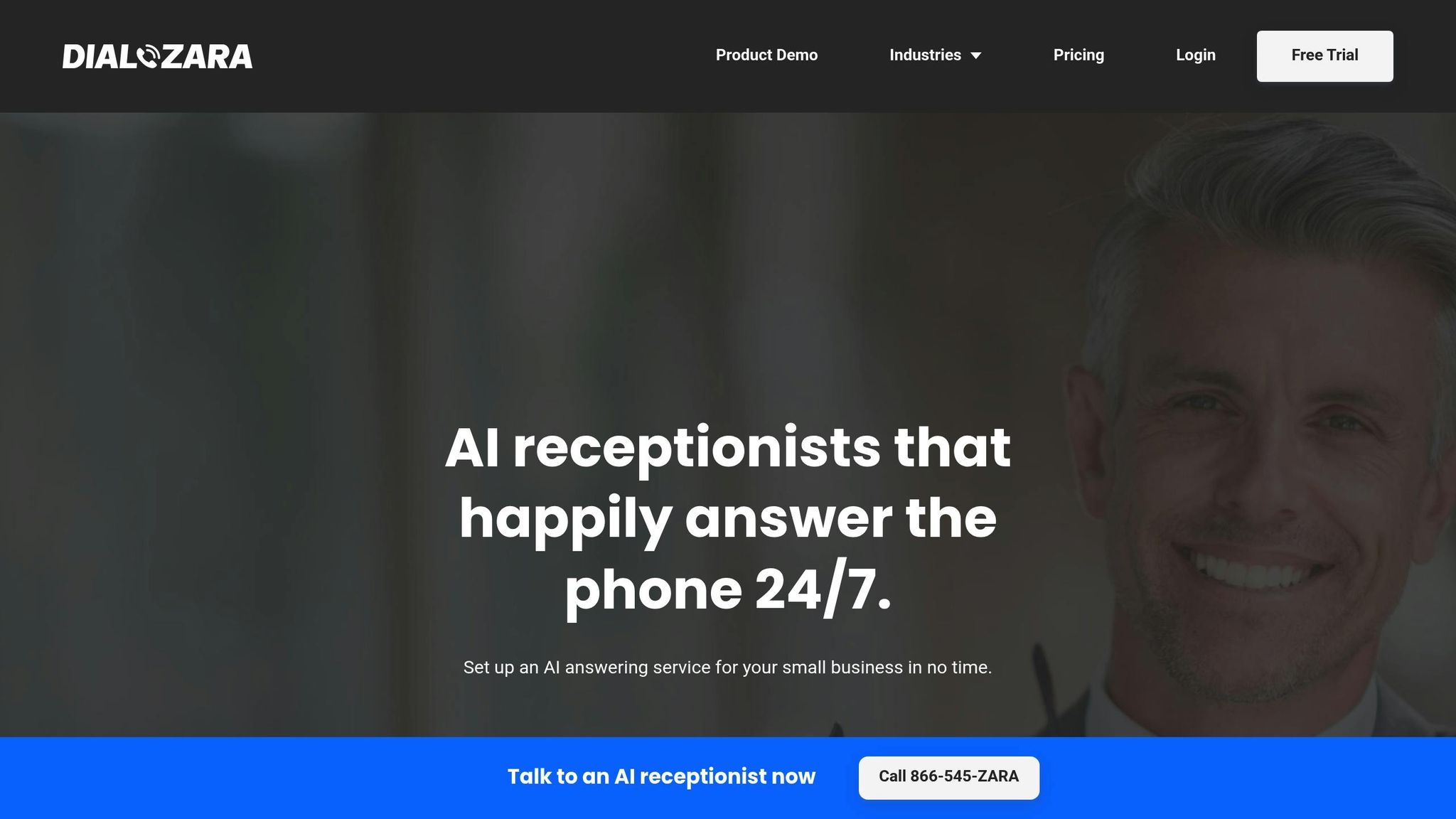
HIPAA Compliance in AI Client Intake
Managing client intake with AI? Here’s what you need to know about HIPAA compliance:
- AI systems handling Protected Health Information (PHI) must follow HIPAA's Privacy and Security Rules, including encryption, secure transmission, and audit controls.
- Business Associate Agreements (BAAs) are required with your AI provider to define responsibilities and ensure compliance.
- Common risks include weak authentication, software vulnerabilities, and human errors like broad user permissions or insufficient training.
- Effective safeguards include TLS-encrypted APIs, OAuth 2.0 authentication, and FHIR-compliant connectors to secure data during integration.
Dialzara's AI system simplifies client intake while meeting HIPAA standards. It offers secure workflows, encrypted integrations, and reduces costs by up to 90% for high call volumes.
HIPAA Rules for AI Systems
AI-based client intake tools need to follow HIPAA's Privacy and Security Rules. This means they must include features like encryption (both in transit and at rest), unique user IDs, audit controls, secure transmission protocols, automated compliance checks, and customizable workflows. The Privacy Rule requires these systems to restrict the use of Protected Health Information (PHI) to only approved purposes. Meanwhile, the Security Rule mandates the implementation of these technical protections.
It's also essential to have your AI provider sign a Business Associate Agreement (BAA). This document outlines their responsibilities under HIPAA and clarifies liability.
Up next, we’ll explore the technical safeguards and integration methods that protect PHI during data exchanges.
Secure Data Integration Methods
To ensure compliance, technical safeguards from HIPAA rules are applied to integration workflows. Following the Security Rule, it's crucial to protect PHI both during transit and while stored. Any integration under a BAA must use encrypted, authenticated communication channels.
Here are some effective methods for secure integration:
- TLS-encrypted APIs: Protects data during transmission.
- OAuth 2.0 token authentication: Ensures only authorized users access the system.
- VPN tunnels: Useful for securing on-premises systems.
- FHIR-compliant secure connectors: Meets healthcare data-sharing standards.
No matter the method, integrations must include encrypted connections, strong authentication, and thorough documentation. This documentation should cover user roles, complete data flow processes, and an incident-response plan.
Up next, we'll dive into common compliance challenges during AI integrations.
sbb-itb-ef0082b
Common HIPAA Compliance Issues
AI-powered client intake systems, even with encrypted connectors and BAAs, often encounter two main challenges: technical weaknesses and errors caused by human oversight.
AI Security Risks
- Weak authentication methods can allow unauthorized access to PHI (Protected Health Information).
- Outdated or unpatched AI software may leave systems open to exploitation.
- Logs that lack proper encryption can expose sensitive information.
- Model inversion attacks risk reconstructing PHI from AI-generated outputs.
Staff Oversight Challenges
- Excessively broad user permissions can unintentionally expose PHI.
- Insufficient training on handling AI workflows increases the chance of errors.
- Irregular or missing audit reviews can delay the detection of breaches.
- Vague or poorly defined incident response plans leave compliance gaps unaddressed.
Next, we’ll look at how Dialzara’s built-in tools help address these issues effectively.
Dialzara's HIPAA Features

Dialzara ensures HIPAA compliance by integrating key safeguards into its AI virtual phone agent. These features align with the Security Rule and audit controls discussed earlier, creating a secure and efficient system for managing sensitive information.
Dialzara's AI agent simplifies client intake while maintaining strict HIPAA protections through encrypted integrations and customizable workflows.
Key Features:
- Guided intake workflows with options to validate PHI securely
- Encrypted connections to over 5,000 applications, set up in minutes
- Efficiently manages high call volumes while reducing costs
Supporting Compliance
Dialzara incorporates essential HIPAA technical safeguards, including access controls, audit logging, and encrypted data transfers. These measures help mitigate security risks and address oversight challenges, ensuring PHI is protected under your BAA.
Cost Advantages
Reduce staffing expenses and administrative workload while maintaining a seamless, compliant client intake process.
Summary
AI-powered client intake requires a focus on data security, HIPAA compliance, and efficient workflows.
Dialzara showcases how AI can enhance HIPAA-compliant client intake by offering:
- Secure Integrations: Seamlessly connects to over 5,000 applications while maintaining HIPAA safeguards[2].
- Round-the-Clock Availability: Ensures client communications are never missed.
- Cost Savings: Reduces costs by up to 90% when managing higher call volumes[3].
Related Posts
HIPAA-Compliant AI Phone Agents for Healthcare
Explore how HIPAA-compliant AI phone agents enhance patient communication, ensuring security and efficiency in healthcare interactions.
Automate Legal Intake: 9 Steps to Simplify with AI
Discover how AI can revolutionize your law firm's legal intake process with these 9 essential steps, enhancing efficiency and client satisfaction.
AI Phone Agent Compliance: Security & HIPAA Guide
Learn how to ensure HIPAA compliance and secure patient data when using AI phone agents in healthcare. Explore key guidelines, challenges, and ethical considerations.
Medical AI Training: Tips for Small Businesses
Enhance patient care in small medical practices by training AI to handle calls, streamline communication, and ensure compliance with regulations.
